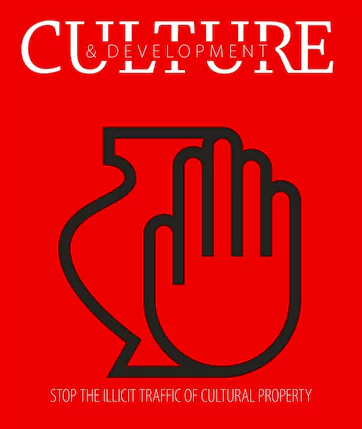The USA and Indian government signed the Cultural Property Agreement (CPA) to curb the illicit trade of antiquities from India to the US on the sidelines of the 46th session of the World Heritage Committee at New Delhi.
- Objective: To establish a defined framework for the return of such artefacts to India and will facilitate smooth and early repatriation.
- India joins the list of 29 existing US bilateral cultural property agreement partners
- The US has 28 active bilateral cultural property agreements including with Afghanistan, China, Cambodia, Egypt, Greece, Italy, Jordan and Turkey.
- USA also returned as many as 262 antiquities to India on this occasion.
- Total Artifacts Repatriated: India has repatriated 358 antiquities since 1976, out of these 345 have been retrieved since 2014.
Enroll now for UPSC Online Course
| What is Antiquity?
About:
- The Antiquities and Art Treasures Act of 1972, defines an “antiquity” as any object or work of art that has been in existence for at least 100 years.
- This includes coins, sculptures, paintings, epigraphs, detached articles, and other items that reflect science, art, literature, religion, customs, morals, or politics from a bygone era.
- For “manuscript, record or other document which is of scientific, historical, literary or aesthetic value”, this duration is “not less than 75 years.”
What is ‘Provenance’ of Antiquity?
- Provenance includes the list of all owners from the time the object left its maker’s possession to the time it was acquired by the current owner.
|
About Cultural Property Agreement (CPA)
- Import Restriction: The CPA restricts the import of certain,
- Archaeological Material: It range in date from 1.7 million years ago through 1770 CE
- Ethnological Material: It include categories of civic, religious, and royal architectural material, religious material and ceremonial items, and manuscripts ranging in date from 2nd century BCE to 1947 CE into the USA
- The US shall offer to return to India any object or material on the Designate List forfeited to the US government as per the agreement.
- Background: The Agreement emerged out of the ‘Kashi Culture Pathway’, the Outcome Document of the G20 Culture Working Group of 2023 held under India’s presidency.
- The document unanimously endorsed and called for a strengthened and effective global coalition to bolster the fight against the illicit trafficking of cultural property.
- As a part of Diplomatic Ties:India reached out to the US government under Article 9 of the 1970 Unesco Convention on the Means of Prohibiting and Preventing the illicit Import, Export and Transfer of Ownership of Cultural Property as part of upgrading diplomatic ties.
- Importance:
- Seizure and Repatriation: The Agreement shall be helpful in quick seizure of Indian antiquities at US Customs and their repatriation back to India.
- Sustainable Development: Repatriation of trafficked antiquities was a practical investment in cultural diplomacy, empowering nations to leverage their cultural assets for educational enrichment, social cohesion, and economic empowerment
- Justice: The repatriation of our collective Heritage will provide a sense of Justice to 1.4 billion Indians as what rightfully belong to Indians has been returned to India.
About Cultural Property
- Definition: As per, Article 1 of the 1970 Convention, Cultural Property is the property which, on religious or secular grounds, is specifically designated by each State as being of importance for archaeology, prehistory, history, literature, art or science belonging to the following categories
- Property relating to history, including the history of science and technology and military and social history,
- Products of archaeological excavations or of archaeological discoveries
- Elements of artistic or historical monuments or archaeological sites which have been dismembered
- Antiquities more than one hundred years old, such as inscriptions, coins and engraved seals
- Property of artistic interest, such as,
- Pictures, paintings and drawings produced entirely by hand in any material (excluding industrial designs and manu-factured articles decorated by hand)
- Original engravings, prints and lithographs
- Rare manuscripts and incunabula, old books, documents and publications of special interest (historical, artistic, scientific, literary, etc.) singly or in collection
- Postage, revenue and similar stamps, singly or in collections
- Archives, including sound, photographic and cinematographic archives
- Articles of furniture more than one hundred years old and old musical instruments.
Check Out UPSC CSE Books From PW Store
Convention on the Means of Prohibiting and Preventing the Illicit Import, Export and Transfer of Ownership of Cultural Property 1970

- Adoption: The Convention was adopted on the14th of November 1970 and made UNESCO a pioneer in the fight against the illicit trafficking of cultural property.
- State Parties: It has been ratified by 145 states.
- The convention is in line with the Sustainable Development Goals defined in the United Nations 2030 Agenda.
- Principles:
- Prevention Measure: It consist of,
- The regular establishment of inventories
- The establishment of export certificates
- The application of controls and approval of traders
- The application of criminal or administrative sanctions
- The organization of information and education campaigns.
- Restitution: Articles 7 and 13 of the 1970 convention provide the provisions for restitution.
- Article 7: States Parties should undertake appropriate measures to seize and return any cultural property stolen and imported.
- Article 13: States that parties are responsible at the national level in term of restitution and cooperation.
- International cooperation:
- Article 9: It Commits States Parties to participate in any concerted international operation by negotiation of bilateral treaties or the control of the export, import and international trade of cultural property
|
![]() 27 Jul 2024
27 Jul 2024
